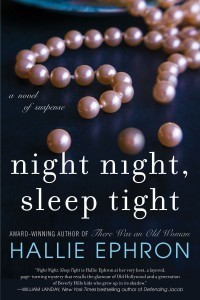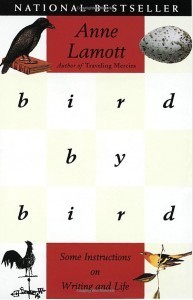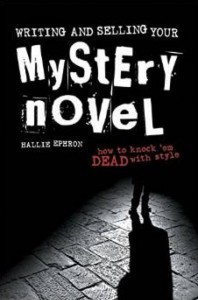Just Hold Your Nose and Write
 “Just hold your nose and write,” is my friend Hallie Ephron’s motto. Hallie has a new book coming out in March, Night, Night, Sleep Tight, a novel of suspense about Hollywood in the 1950s and 1980s. If you’ve never read Hallie’s books, you should, because they’re terrific. If you want a little taste, just to try, she has a short story with the same characters and setting up for $1.99 for Kindle here.
“Just hold your nose and write,” is my friend Hallie Ephron’s motto. Hallie has a new book coming out in March, Night, Night, Sleep Tight, a novel of suspense about Hollywood in the 1950s and 1980s. If you’ve never read Hallie’s books, you should, because they’re terrific. If you want a little taste, just to try, she has a short story with the same characters and setting up for $1.99 for Kindle here.
Anyway, I have been chanting Hallie’s motto as if it were a mantra as I steam toward the end of the first draft of Fogged Inn, the fourth book in my Maine Clambake Mystery series. I really want to finish the draft before we leave Key West on March 1. We’re doing a little sight-seeing and family visiting on the way home, and I’m hoping to have that week to let the manuscript “rest,” before I begin the first round of revisions.
 Anne Lamott says famously in Bird by Bird, that we all have to write sh**ty first drafts, but sometimes I feel I abuse the privilege. The problem is, I can’t really think unless I write. I’ve always been like this. Back in the day, I solved complex business problems by writing the detailed memo supporting my recommendation–and in the writing process discovered what my recommendation actually was. The memo often never left my computer. Usually it was was transformed into a high level series of Powerpoint bullets. But having written it, I knew my case inside and out, and believed it in myself, and therefore could defend it.
Anne Lamott says famously in Bird by Bird, that we all have to write sh**ty first drafts, but sometimes I feel I abuse the privilege. The problem is, I can’t really think unless I write. I’ve always been like this. Back in the day, I solved complex business problems by writing the detailed memo supporting my recommendation–and in the writing process discovered what my recommendation actually was. The memo often never left my computer. Usually it was was transformed into a high level series of Powerpoint bullets. But having written it, I knew my case inside and out, and believed it in myself, and therefore could defend it.
For better or for worse, it’s the same with fiction. For Fogged Inn, I wrote a high level synopsis for my agent and my editor. It’s turned out to be mostly accurate as the first draft has unfolded, but man does it leave out a ton of important information, all of which I have to make up along the way.
I’ve never successfully completed an outline. I do sort of a look-ahead-see-around-the-next-bend form of planning that I call scaffolding. (My writer friend Barb Goffman calls it being a plantser, the combination of the two fiction-writing approaches known as being a plotter or a seat-of-the-pantser.) I brainstorm outside of the draft. When I’m stuck, or feel something is lacking, I’ll write back stories for characters or use a brainstorming technique of 20 reasons. (Write down 20 reasons Joe goes down the cellar…)
 But ultimately, there’s no substitute for working it out in the writing. Stephen King says characters reveal themselves in the writing like photographs in the developer’s bath, and that is certainly my experience. (I wonder how much longer anyone will understand that analogy?)
But ultimately, there’s no substitute for working it out in the writing. Stephen King says characters reveal themselves in the writing like photographs in the developer’s bath, and that is certainly my experience. (I wonder how much longer anyone will understand that analogy?)
It’s fashionable for professional writers to claim there’s no such thing as writer’s block, but I know what it’s like to be at the crossroads where you can’t write because you don’t know what comes next and you don’t know what comes next because you aren’t writing.
 In those moments, I whip myself with my motto, “The only way to it is through it.” I conjure up Hallie’s, “Hold your nose and write.” And I dangle in front myself as a reward the part of the writing process I absolutely love. “If you finish this #$%^& first draft,” I tell myself, “you get to revise.”
In those moments, I whip myself with my motto, “The only way to it is through it.” I conjure up Hallie’s, “Hold your nose and write.” And I dangle in front myself as a reward the part of the writing process I absolutely love. “If you finish this #$%^& first draft,” I tell myself, “you get to revise.”
Junot Diaz says writing a novel is an act of faith. Faith in the beginning that your idea is good enough to be a novel, faith in the middle that it will somehow lead to the ending, faith as you write the ending that is has anything to do with the beginning you wrote so many months ago.
You gotta have faith.
I have faith that I will be returning to New England soon with a completed first draft. It will be too short, terrible, disjointed, out of order, and full of dead ends and things-I-forgot-to-tell-you-earlier. But it will be done.
Lea Wait's Blog
- Lea Wait's profile
- 509 followers



